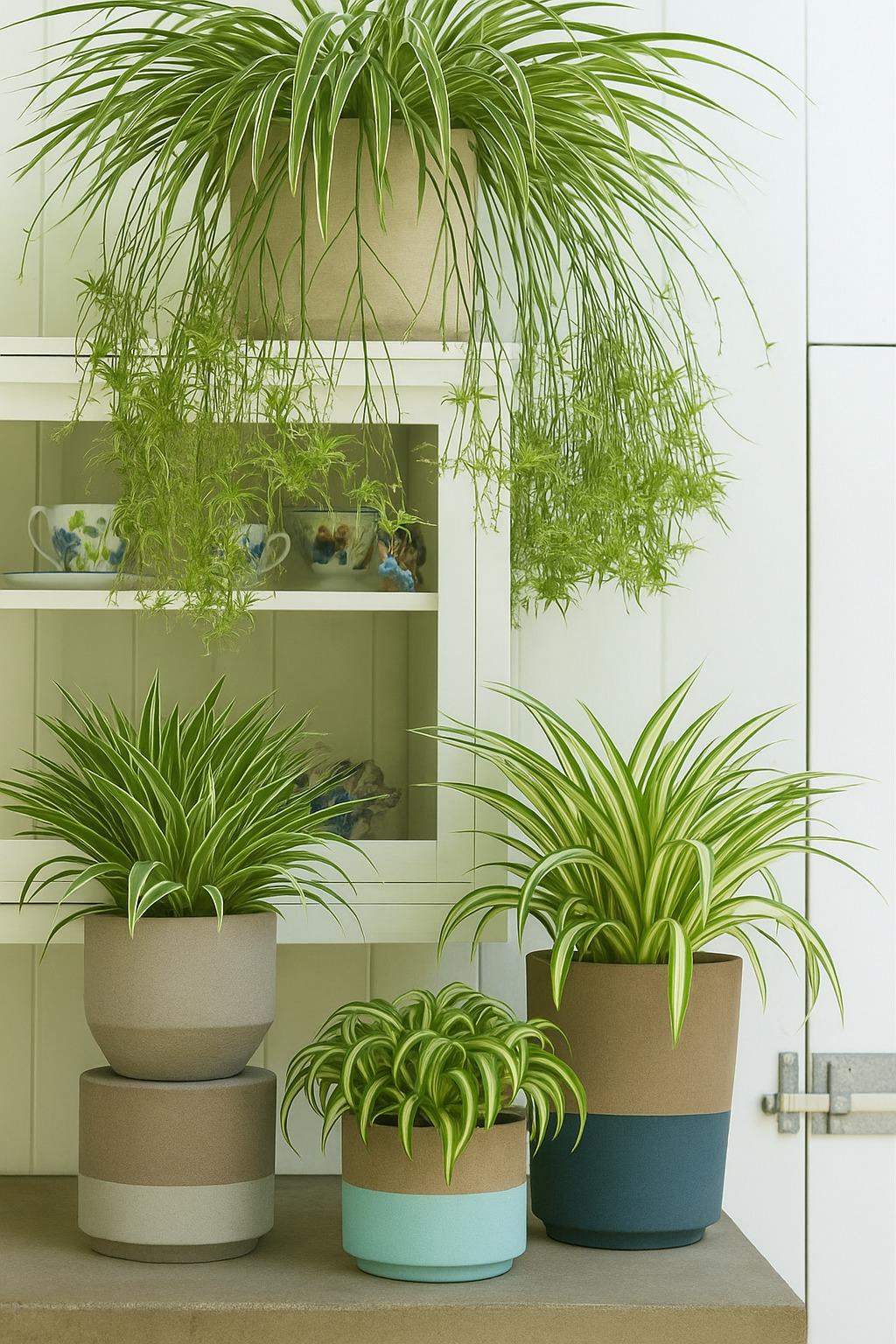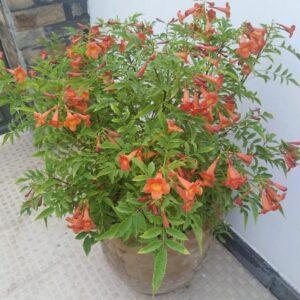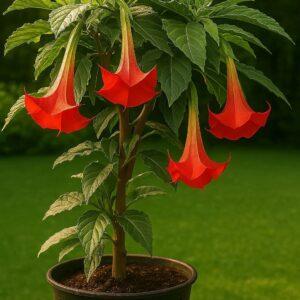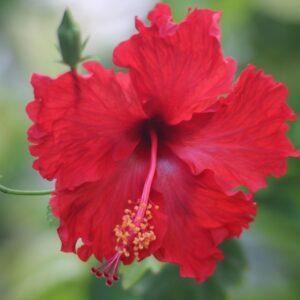Spider Plant (Chlorophytum comosum) – A Timeless, Low-Maintenance Air Purifier
One of the most well-liked houseplants in the world, for good cause, is the spider plant, which is scientifically known as Chlorophytum comosum. It’s hardy, simple to cultivate, and well-known for its elegant, arcing leaves and hanging plantlets (young plants), which resemble small spiders and give the plant its moniker.
Spider plants are a great option for novices, workplaces, and houses with little light. They are also known to be nontoxic to animals, which makes them a safe choice for cat and dog owners.
🌿 Overview
Botanical name: Chlorophytum comosum
Popular names: Spider Plant, Airplane Plant, Ribbon Plant, Spider Ivy
Plant type: Herbaceous perennial (cultivated indoors as a houseplant)
Height: 12 to 18 inches (30 to 45 cm)
12–24 inches (30–60 cm) across, including trailing offsets
Foliage: Thin, arcing leaves that are either green or variegated (green with white or cream stripes)
Flowers: tiny white blooms on long stems, followed by young plants
💧 Watering Schedule
Spider Plants like moderately moist soil, but they don’t like waterlogging.
Watering frequency:
Water once a week in the spring and summer.
Lower the frequency to once every 10–14 days during the colder months.
Prior to watering, inspect the soil: The top 1 inch (2.5 cm) of soil should feel dry.
Indications of overwatering include yellowing leaves and soft roots.
Indications of underwatering include brown leaf tips and flabby or twisted leaves.
Tip: To prevent root rot, use pots with drainage holes.
Necessities for Light and Temperature
Although Spider Plants are very flexible, they thrive in sunny environments.
Light:
The best light is bright and indirect.
Can withstand low light, but may experience slower growth and loss of variegation.
Keep out of direct, intense sunlight, which might burn the foliage.
Temperature:
The optimum temperature is between 18 and 27 degrees Celsius (65 to 80 degrees Fahrenheit).
Minimum: 10°C (50°F)
Do not place close to hot air vents or cold drafts.
Needs for Soil and Fertilizer
The soil:
Use a potting mix that drains well.
Perlite or coarse sand can be combined with ordinary indoor potting soil at a 70:30 ratio.
pH: Slightly acidic to neutral (6.0–7.0)
Fertilizer:
Feed every 4–6 weeks during the spring and summer.
Use a well balanced liquid houseplant fertilizer (e.g., 10-10-10).
Excessive fertilization can result in brown tips, so avoid doing it.
Compost tea, seaweed extract, or diluted vermicompost liquid are examples of organic alternatives.
Maintenance and pruning
Spider Plants are simple to care for but appreciate some trimming every now and then.
Trim:
Cut off the dead leaves and brown ends using sharp scissors.
If the plant seems overgrown, prune the flower stalks or plantlets.
Repotting:
Repot every one to two years, or if the roots are encircling the container or forcing out the soil.
Select a pot that is 1 to 2 inches larger in diameter.
Brown leaf tips are frequent, typically due to:
Fluoride in tap water (use filtered or distilled water if possible)
Excessive fertilization or low humidity
Methods of Propagation
Due to its “”babies,”” the Spider Plant is very simple to reproduce.
Spiderlings (plantlets):
Wait until the infant has little roots.
Cut off the mother plant and pot it in moist soil.
Water gently and set in bright, indirect sunlight.
Water propagation:
Put the infant in a glass of water.
Transfer to soil after the roots are a few centimeters in length.
Tip: For the first two to three weeks, keep young plants moist (but not wet) to encourage healthy root development.
🌬️ Air-purification Advantages
Spider Plants are recognized by NASA as effective air purifiers that get rid of:
Formaldehyde
Xylene
Carbon monoxide
They aid in enhancing indoor air quality, particularly in confined areas.
🐾 Pet-Friendship
The good news is that Spider Plants are safe for dogs and cats, however the leaves may be eaten by cats because of the plant’s little hallucinogenic chemicals, which are comparable to catnip.
If your pet is a known plant chewer, keep them high up or in hanging baskets.
Tips for Design and Display
Display the trailing plantlets in hanging baskets.
Ideal for use on work desks, kitchen counters, restrooms, or bookshelves.
Works well with peace lilies, ferns, and pothos.
Summary
One of the most beautiful, rewarding, and tolerant houseplants is the Spider Plant. Regardless of whether you are a beginner gardener or an experienced plant parent, this timeless gem flourishes with little work. It grows quickly, cleans your air, and reproduces profusely, adding beauty and greenery to your environment.”
Spider plant
₨350.00
“The well-liked, air-purifying houseplant known as the “”Spider Plant”” (*Chlorophytum comosum*) has long, arching green leaves with white or yellow stripes. The little plantlets, sometimes referred to as “”spiders”” because they hang from the mother plant like a web, are where it gets its name. This plant, which is native to tropical and southern Africa, is perfect for novices because it requires minimal maintenance. Spider Plants do well in strong, indirect light, but they can also handle low light levels. They favor moderate watering and well-drained soil; between waterings, allow the soil to dry out a little. They are ideal for table or hanging plants in workplaces and houses because they are non-toxic and grow quickly.
“





Reviews
There are no reviews yet.